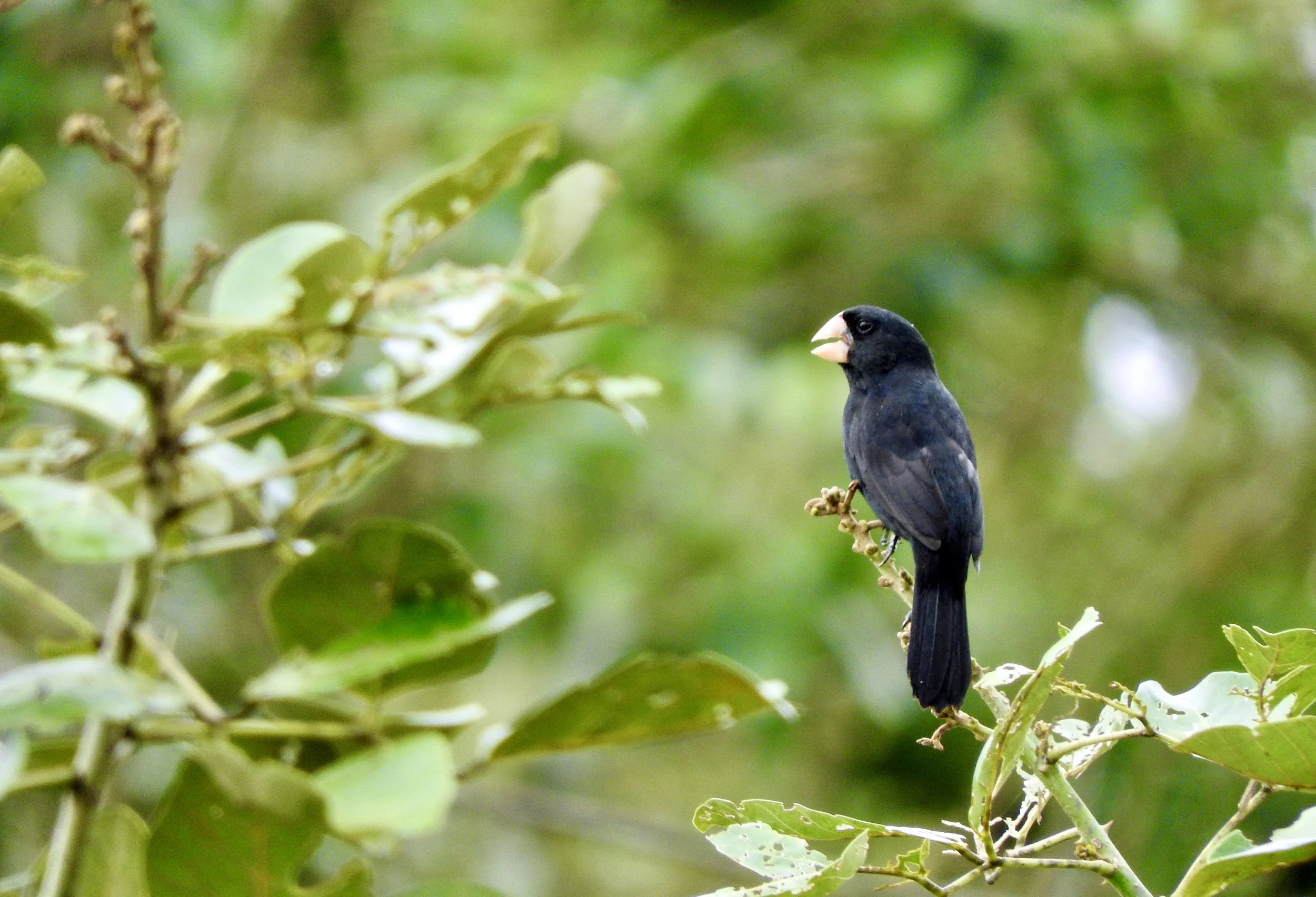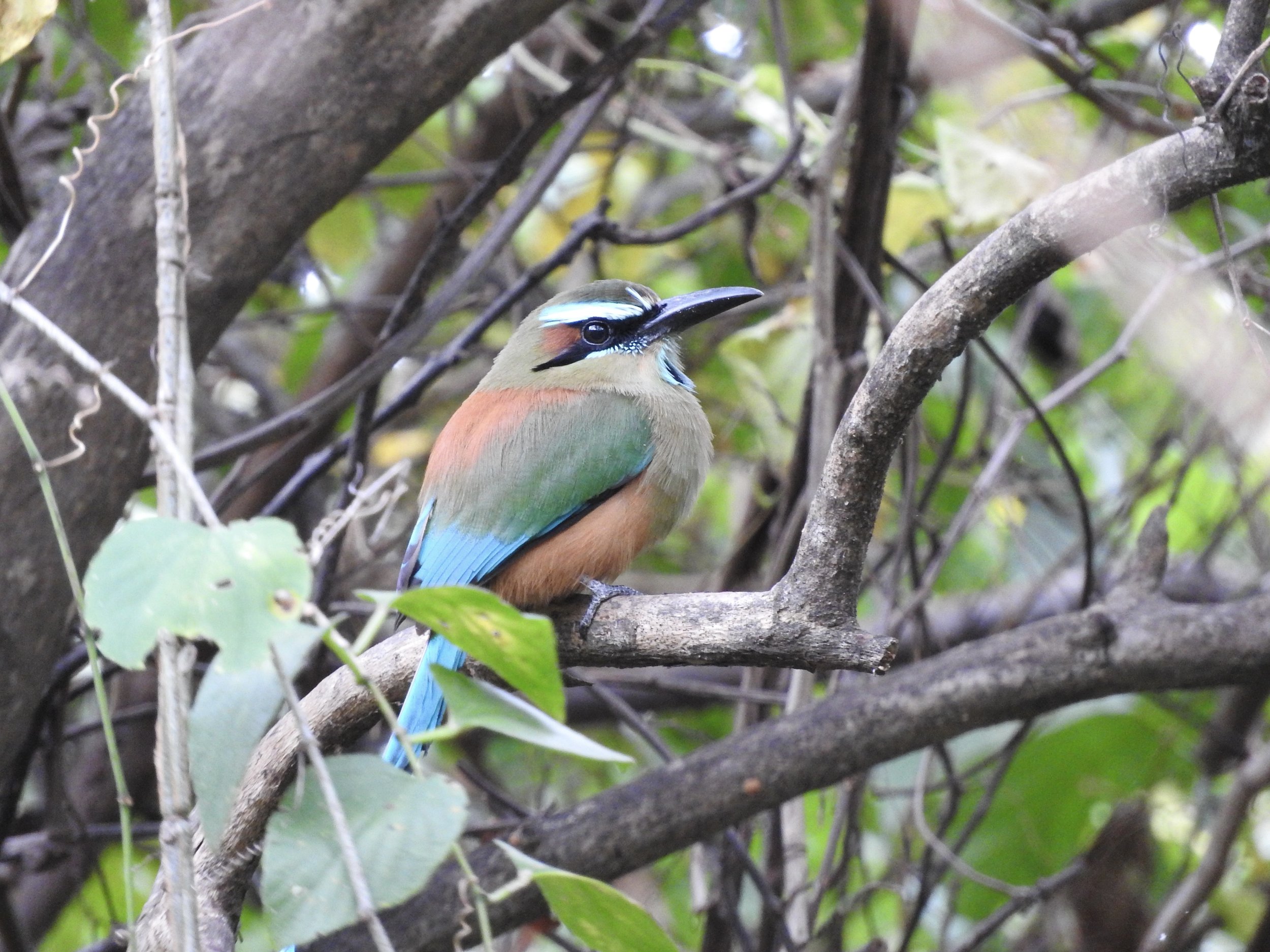Birding Costa Rica: Parrots and Hummingbirds at Rancho Naturalista
Brown-hooded Parrot
Chris’s Costa Rica birding sojourn continues with a much-anticipated visit to the famous Rancho Naturalista Lodge.
After an epic drive across half the length of Costa Rica the day before, today was a day the whole group was looking forward to. We would be spending the entire day birding at one of the premier birding lodges in Central America, Rancho Naturalista. With an eBird list of over 500 species, Rancho Naturalista’s Caribbean rainforest birding is truly excellent, and it’s a must-visit spot for many birders in Costa Rica. Needless to say, I was pretty excited about today.
On the drive to the lodge, we made a short stop by a river where we registered 33 species, including the reason for the stop: the magnificent Sunbittern. I’ve seen this species a bunch of times in Colombia, but it never gets boring. We watched our Sunbittern relaxing and preening alongside the rushing river before carrying on to Rancho.
Birding Fact: the Sunbittern (Eurypyga helias) is the sole member of the Eurypygidae family. Surprisingly, it shows both molecular and morphological similarities with the Kagu (Rhynochetos jubatus) from New Caledonia. This indicates that its origins are gondwanic. Amazingly, the closest relative of the kagus and Sunbittern appears to be the tropicbirds. You can see Diego discussing that origin on this episode of The Birders Show.
José Castaño, happy with his digiscoped Sunbittern videos
By the time we got to Rancho, it was already after 9 am, so we hit the trails right away. One of our big targets over the next couple of days was the enigmatic and rarely-seen Gray-headed Piprites. It was probably my co-host Diego’s top target bird for the entire trip. Sadly, the piprites didn’t play ball at any point, and it remains a target for Diego. I wouldn’t even say that we dipped the piprites; it’s such a tough bird to see that it can hardly be classified as a dip.
Mixed flock activity along the trails was fairly slow at first, but it gradually picked up, and we enjoyed good views of a host of tanagers, wrens, stipplethroats, flycatchers, and woodcreepers. We birded the hillside trails for the duration of the morning before returning to Rancho for lunch.
The veranda at the lodge is an absolute birder’s dream - a delicious local lunch with a view of buzzing bird feeders, visited by Montezuma Oropendolas, Brown Jays, Gray-headed Chachalacas, and Red-billed Pigeons. We tucked into the hearty meal, enjoyed a few cups of local coffee, and photographed the feeder birds. We also caught up with the lodge owner, Lisa Erb, who has just arrived back in Costa Rica after spending the entire Covid-period back in the US.
Red-billed Pigeon was a lifer for me in Costa Rica - they were common visitors at the Rancho Naturalista bird feeders
After an hour or so of laid-back feeder birding, it was time to head to Rancho Bajo. This lower section of the reserve is where Lisa’s parents live and, crucially, is home to a huge verbena bush. Eagle-eyed readers of this blog will remember our stop at a verbena patch on Day One of the trip. These purple flowers are catnip to the hummingbirds, and Rancho’s verbenas are famous for attracting rare Costa Rican target species.
We got one of the targets right away - a female Snowcap was busy working on the flowers when we arrived. It somewhat reluctantly went on the list, but sadly, the stunning male didn’t show. However, the male of another species did show: soon after arriving, a spectacular male Black-crested Coquette put in an appearance. This was my first good view of a male coquette, and it didn’t disappoint.
As we prepared to head back up to the main lodge, we got one last pleasant surprise - a pair of Brown-hooded Parrots landed in a nearby plantain tree and started feasting on the fruit. They gorged for about fifteen minutes, giving everyone ample time to photograph and digiscope them. Diego and I even had time to go live on The Birders Show Instagram (you can see that live video here)! These parrots are extremely rare in Colombia, so this was an excellent lifer for me.
(Sad) Birding Fact: did you know that one-third of all parrot species are threatened by extinction, with higher aggregate extinction risk than any other comparable bird group? To put that into context, there are almost 400 parrot species in the world.
The Brown-hooded Parrot is sometimes considered conspecific with the Rose-faced Parrot
The day wasn’t quite done, though. One of the highlights of Rancho Naturalista is the hummingbird pools. A short walk down into the jungle from the lodge, you come to a lovely deck overlooking a series of shallow pools in a creek. These pools attract a range of hummingbird species to bathe at dusk, along with a bunch of other small passerines.
Birding Fact: although hummingbirds may occasionally stop to bathe in shallow water, they often prefer to wet their feathers by flying through, or sitting under a gentle spray. They often like to bathe in rainstorms, and can sometimes be seen “taking a shower” in rainstorms with their wings open.
We watched in awe as a Purple-crowned Fairy came to bathe, hovering above the water before plunging in and out. Once it was done, it flew up to an eye-love branch to dry off, a privileged view of one of the region’s prettiest hummers. Next, a female Snowcap and Crowned Woodnymph repeated the trick. Finally, a Wood Thrush, Sulphur-rumped Warbler, and Buff-throated Foliage-gleaner came in to bathe as well. What a magical place to end the day. And it was another triple-figure species day: 113 birds registered between us. Not bad for one location!










